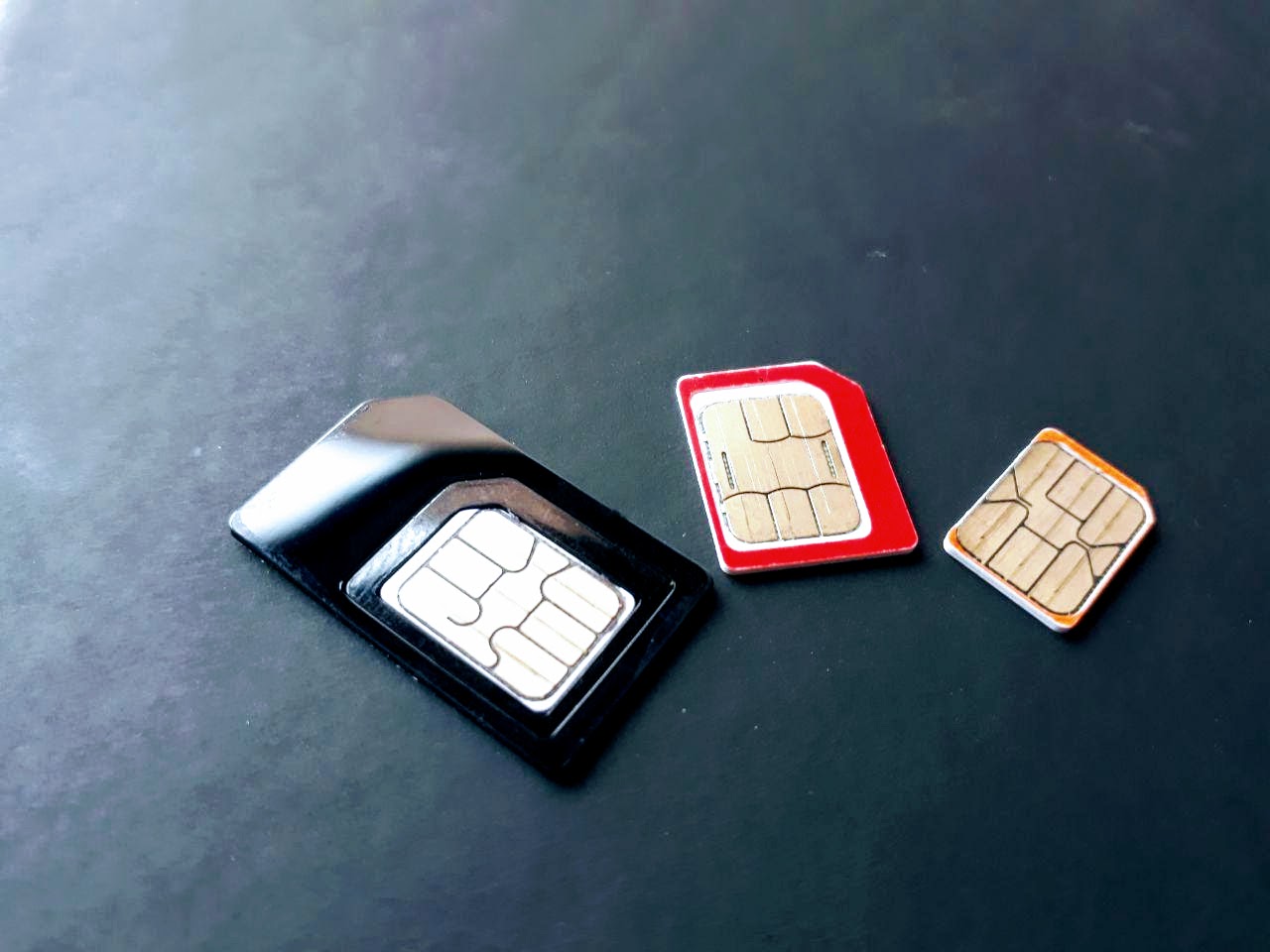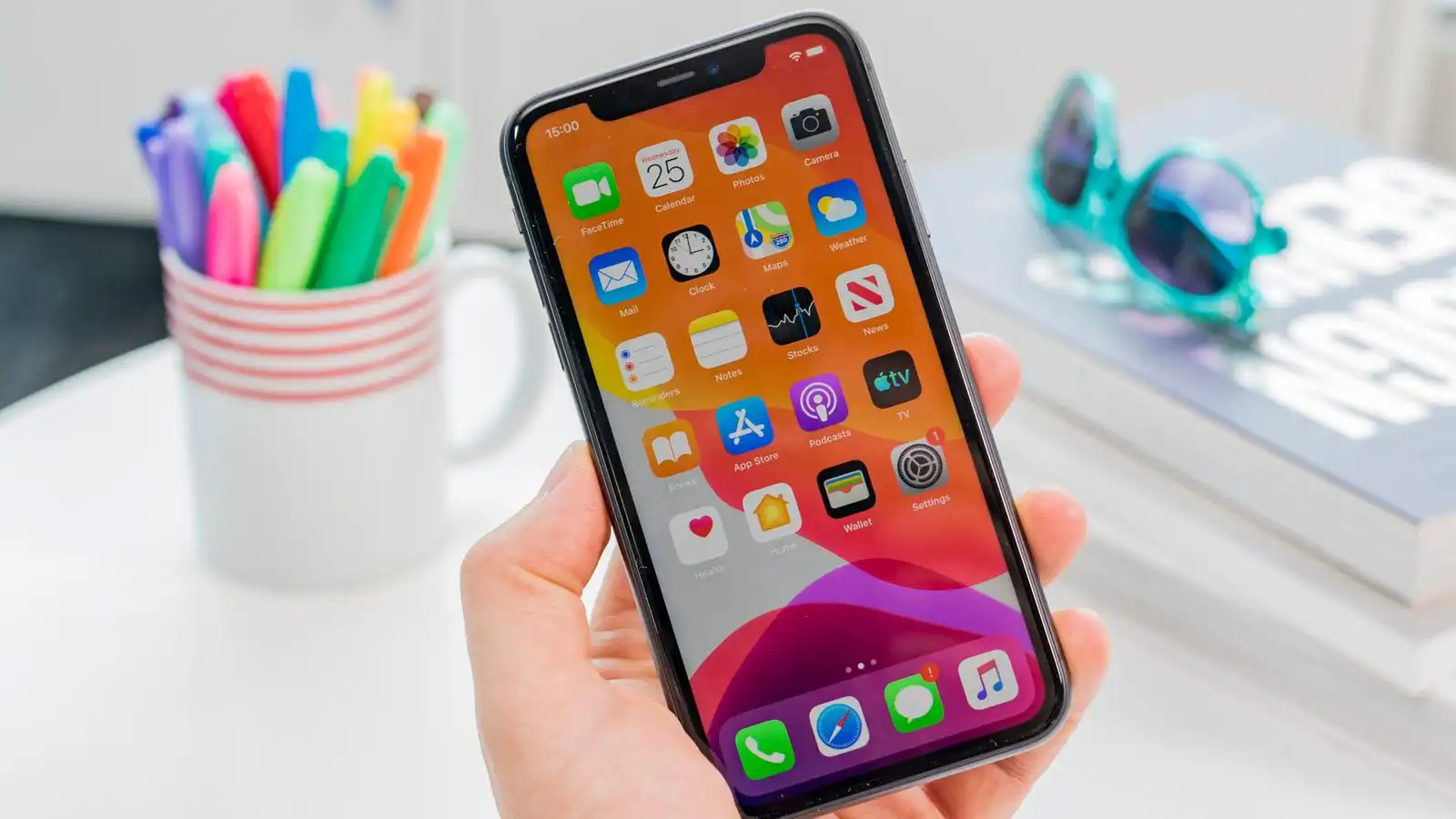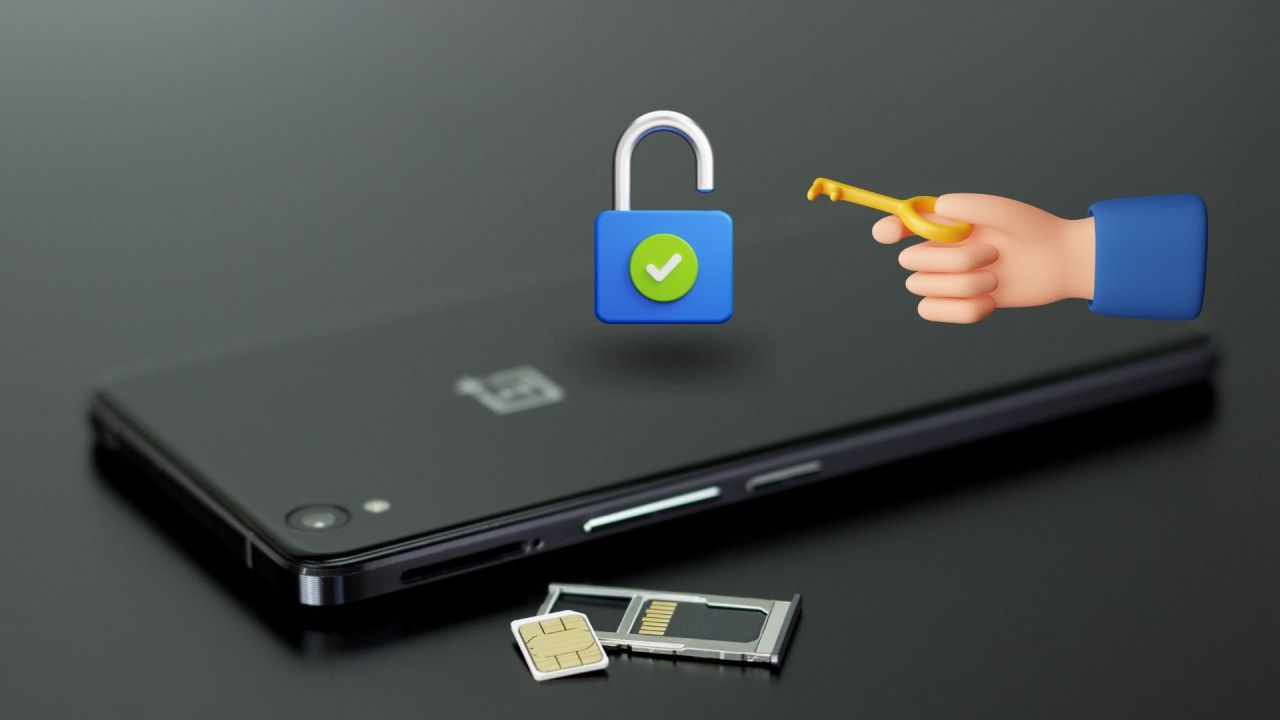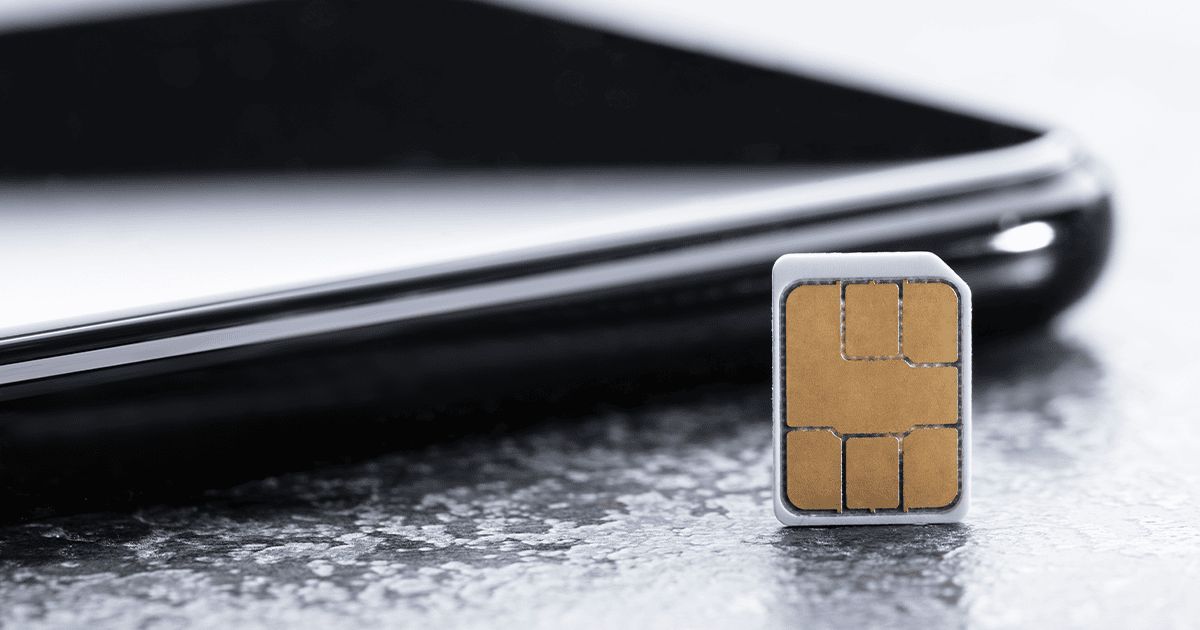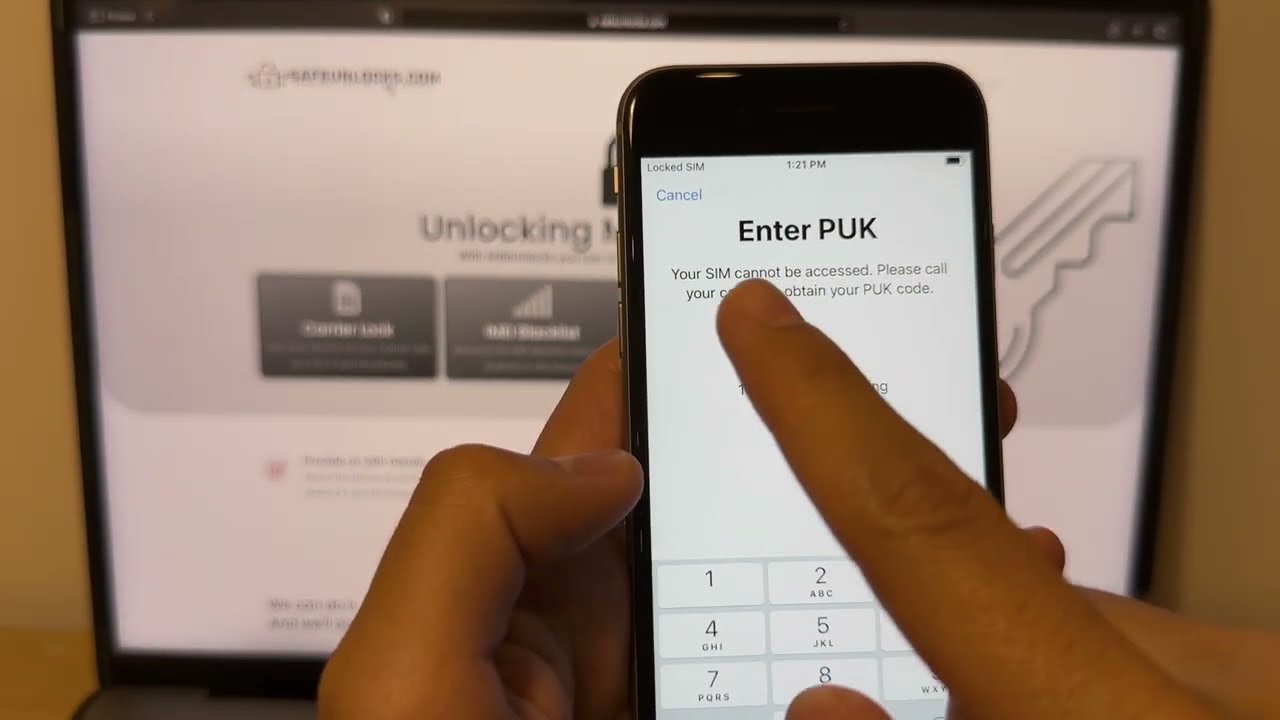Introduction
In today's digital age, mobile devices have become an indispensable part of our daily lives. From staying connected with loved ones to accessing a wealth of information at our fingertips, the functionality of smartphones and other mobile devices relies heavily on the tiny yet powerful component known as the Subscriber Identity Module (SIM) card. However, despite its small size, the SIM card plays a crucial role in enabling communication and connectivity.
One common issue that mobile users may encounter is SIM card locking, which can be a frustrating experience. Understanding the causes of SIM card locking is essential for both preventing and resolving this issue. Whether you're a seasoned mobile user or a newcomer to the world of smartphones, gaining insight into the factors that contribute to SIM card locking can help you navigate potential challenges with confidence.
Throughout this article, we will delve into the intricacies of SIM card locking, shedding light on the reasons behind this phenomenon and exploring effective strategies for avoiding it. By gaining a deeper understanding of SIM card locking, you can equip yourself with the knowledge needed to ensure uninterrupted access to essential mobile services.
As we embark on this exploration, it's important to recognize that SIM card locking can stem from various sources, ranging from network provider restrictions to security concerns. By unraveling the complexities of this issue, we can empower mobile users to take proactive measures in safeguarding their SIM cards and maintaining seamless connectivity. Let's embark on this enlightening journey to uncover the causes of SIM card locking and discover actionable steps to mitigate its impact.
What is SIM Card Locking?
SIM card locking is a security feature designed to protect the data and identity associated with a mobile device's SIM card. When a SIM card is locked, it requires a specific Personal Identification Number (PIN) to be entered before the device can access the mobile network. This PIN acts as a barrier, preventing unauthorized individuals from using the SIM card and potentially compromising sensitive information.
In essence, SIM card locking serves as a safeguard against unauthorized usage and unauthorized access to the subscriber's mobile network account. It adds an additional layer of security to the SIM card, ensuring that only authorized users can utilize the mobile services associated with the SIM card.
There are two primary types of SIM card locking: PIN lock and PUK (Personal Unblocking Key) lock. The PIN lock is activated when a user sets a PIN for their SIM card. Upon inserting the SIM card into a new device or restarting the current device, the user must enter the correct PIN to unlock the SIM card and gain access to the mobile network. On the other hand, the PUK lock is triggered when an incorrect PIN is entered multiple times, resulting in the SIM card becoming locked. To unlock the SIM card in this scenario, the user must enter the PUK provided by the network operator.
It's important to note that SIM card locking is different from device locking, which typically involves security measures such as passcodes, fingerprint recognition, or facial recognition to secure the device itself. SIM card locking specifically focuses on protecting the SIM card and the associated mobile network services.
Understanding the intricacies of SIM card locking is crucial for mobile users, as it underscores the significance of safeguarding the SIM card against unauthorized usage and potential security breaches. By comprehending the purpose and mechanics of SIM card locking, individuals can take proactive steps to ensure the security and integrity of their mobile communications.
Through this insight, mobile users can navigate the realm of SIM card security with confidence, knowing that their SIM cards are shielded by robust protective measures.
Reasons for SIM Card Locking
-
Network Provider Restrictions
When a mobile device is purchased through a specific network provider, the SIM card accompanying the device may be locked to that particular network. This restriction prevents the SIM card from being used with a different network, thereby ensuring that the subscriber remains within the network provider's ecosystem. This practice is commonly employed by network operators to promote customer loyalty and minimize the likelihood of subscribers switching to rival networks. As a result, individuals who attempt to use a SIM card from a different network in a locked device may encounter SIM card locking, impeding their ability to access mobile services.
-
Incorrect PIN Entry
One of the primary reasons for SIM card locking is the repeated entry of an incorrect Personal Identification Number (PIN). When a user repeatedly enters the wrong PIN, the SIM card becomes locked as a security measure. This safeguard is implemented to thwart unauthorized access to the SIM card and the associated mobile network services. In such cases, the user must enter the correct PUK (Personal Unblocking Key) provided by the network operator to unlock the SIM card and restore access to the mobile network.
-
Security Concerns
SIM card locking serves as a vital security measure to protect the sensitive data and communication channels associated with the SIM card. By requiring a PIN for access, the SIM card remains safeguarded against unauthorized usage, mitigating the risk of unauthorized individuals exploiting the subscriber's mobile services. This security feature is instrumental in preserving the integrity and confidentiality of the subscriber's mobile communications, ensuring that only authorized users can utilize the SIM card and access the associated mobile network.
By understanding the reasons for SIM card locking, mobile users can gain valuable insights into the factors that contribute to this phenomenon. Whether it stems from network provider restrictions, incorrect PIN entry, or security considerations, recognizing these underlying causes empowers individuals to navigate potential challenges associated with SIM card locking effectively. This awareness paves the way for implementing proactive measures to prevent SIM card locking and maintain uninterrupted access to essential mobile services.
Network Provider Restrictions
When mobile devices are acquired through specific network providers, the accompanying SIM cards are often locked to the respective networks. This means that the SIM card can only be utilized within the ecosystem of that particular network, restricting its compatibility with SIM cards from other network operators. This practice is aimed at fostering customer loyalty and minimizing the likelihood of subscribers switching to rival networks.
Network provider restrictions are commonly implemented through SIM card locking to ensure that users remain within the network's sphere of services. This strategy aligns with the business objectives of network operators, as it encourages subscribers to continue utilizing their services and discourages them from migrating to competing networks. By tethering the SIM card to a specific network, subscribers are effectively bound to the services and offerings provided by that network operator.
From a technical standpoint, network provider restrictions are enforced through the locking of SIM cards, thereby preventing them from being used with SIM cards from other network providers. This locking mechanism is embedded within the SIM card and is activated when the card is inserted into a device. As a result, individuals attempting to use a SIM card from a different network in a locked device may encounter SIM card locking, impeding their ability to access mobile services.
The rationale behind network provider restrictions is rooted in the competitive landscape of the telecommunications industry. By securing the SIM card to a specific network, network operators aim to retain their subscriber base and minimize the potential for subscribers to switch to rival networks. This strategic approach is designed to enhance customer retention and bolster the network operator's market position.
From a consumer perspective, network provider restrictions underscore the importance of understanding the compatibility of SIM cards with specific devices and network operators. It prompts individuals to consider the implications of SIM card locking when acquiring a new device or switching network providers. By being aware of these restrictions, consumers can make informed decisions regarding their mobile devices and network subscriptions, ensuring that they align with their usage preferences and requirements.
In essence, network provider restrictions through SIM card locking are emblematic of the competitive dynamics within the telecommunications industry. By comprehending the implications of these restrictions, mobile users can navigate the landscape of network provider compatibility and make informed choices that align with their connectivity needs and preferences.
Incorrect PIN Entry
One of the primary reasons for SIM card locking is the repeated entry of an incorrect Personal Identification Number (PIN). When a user repeatedly enters the wrong PIN, the SIM card becomes locked as a security measure. This safeguard is implemented to thwart unauthorized access to the SIM card and the associated mobile network services.
The process of entering the incorrect PIN typically unfolds when a user attempts to access their mobile device or initiate a SIM card-related operation, such as making a call or sending a text message. Each SIM card is assigned a unique PIN, which serves as a protective barrier against unauthorized usage. When the user incorrectly enters this PIN multiple times, the SIM card automatically locks itself to prevent further unauthorized attempts.
From a security standpoint, the locking of the SIM card due to incorrect PIN entry is a crucial protective measure. It acts as a deterrent against unauthorized individuals attempting to gain access to the SIM card and the subscriber's mobile network account. By triggering the SIM card lock in response to repeated incorrect PIN entries, the system effectively fortifies the security of the SIM card, safeguarding the subscriber's data and communication channels.
Upon encountering SIM card locking due to incorrect PIN entry, the user is prompted to enter the PUK (Personal Unblocking Key) provided by the network operator. The PUK serves as a means to unlock the SIM card and restore access to the mobile network. This process necessitates the user's verification and validation, ensuring that only authorized individuals can regain access to the locked SIM card.
It is important for mobile users to exercise caution when entering the PIN associated with their SIM card, as repeated incorrect entries can trigger the SIM card lock. This underscores the significance of maintaining awareness of the correct PIN and being diligent in its entry to avoid inadvertent locking of the SIM card. Additionally, in the event of SIM card locking due to incorrect PIN entry, users should promptly seek assistance from their network operator to retrieve the PUK and unlock the SIM card, thereby restoring seamless access to mobile services.
By understanding the implications of incorrect PIN entry and its correlation with SIM card locking, mobile users can adopt a proactive approach to safeguarding their SIM cards and preserving the integrity of their mobile communications. Through vigilance and adherence to security protocols, individuals can mitigate the risk of SIM card locking due to incorrect PIN entry, ensuring uninterrupted access to essential mobile services.
Security Concerns
SIM card locking is intrinsically linked to security concerns, reflecting the paramount importance of safeguarding the sensitive data and communication channels associated with the SIM card. By requiring a Personal Identification Number (PIN) for access, SIM card locking serves as a vital security measure, mitigating the risk of unauthorized usage and potential security breaches.
At its core, SIM card locking is designed to fortify the security of the SIM card, ensuring that only authorized users can access the associated mobile network services. This protective mechanism is instrumental in preserving the integrity and confidentiality of the subscriber's mobile communications, shielding the SIM card from unauthorized exploitation.
From a broader perspective, security concerns encompass a spectrum of potential threats and vulnerabilities that SIM card locking aims to address. These concerns encompass unauthorized access to the SIM card, fraudulent usage of mobile services, and the compromise of sensitive subscriber information. By mandating the entry of a PIN for SIM card access, this security feature acts as a barrier against unauthorized individuals seeking to exploit the subscriber's mobile network account.
Furthermore, SIM card locking serves as a deterrent against unauthorized SIM card swapping, a practice that can be exploited for illicit activities such as identity theft and fraudulent transactions. By locking the SIM card, mobile users are empowered to mitigate the risk of unauthorized individuals attempting to manipulate the subscriber's mobile services for nefarious purposes.
In the realm of mobile security, the significance of SIM card locking cannot be overstated. It stands as a foundational element in the defense against unauthorized access and misuse of the subscriber's mobile network account. By imposing the requirement of a PIN for SIM card access, this security measure bolsters the resilience of the SIM card, ensuring that only authorized individuals can utilize the mobile services associated with the SIM card.
In essence, security concerns underpin the rationale for SIM card locking, emphasizing the imperative of preserving the confidentiality and integrity of the subscriber's mobile communications. By recognizing the pivotal role of SIM card locking in addressing security concerns, mobile users can appreciate its significance as a safeguard against unauthorized usage and potential security threats.
How to Avoid SIM Card Locking
Safeguarding your SIM card from locking entails proactive measures and conscientious practices to maintain uninterrupted access to mobile services. Here are essential strategies to prevent SIM card locking and ensure seamless connectivity:
-
Mindful PIN Management: A fundamental step in averting SIM card locking is to exercise diligence in managing your Personal Identification Number (PIN). Ensure that you memorize your SIM card's PIN and refrain from sharing it with others. By entering the correct PIN on the first attempt, you can circumvent the risk of triggering the SIM card lock due to repeated incorrect entries.
-
Secure Storage of PUK: The Personal Unblocking Key (PUK) serves as a crucial lifeline in unlocking a locked SIM card. It is imperative to securely store your PUK in a readily accessible yet secure location. By safeguarding the PUK, you can swiftly unlock the SIM card if it becomes locked due to repeated incorrect PIN entries.
-
Adherence to Network Guidelines: If you are using a SIM card provided by a specific network operator, it is advisable to familiarize yourself with the network's guidelines and protocols regarding SIM card usage. This includes understanding the permissible number of PIN entry attempts and the prescribed procedure for unlocking a locked SIM card using the PUK.
-
Regular PIN Verification: Periodically verify that your SIM card's PIN is correctly set and operational. This proactive approach allows you to confirm the functionality of the PIN and address any discrepancies or issues before they lead to potential SIM card locking.
-
Network Provider Compatibility: When acquiring a new device or considering a switch to a different network provider, ascertain the compatibility of the SIM card with the intended device and network. Understanding the implications of network provider restrictions and SIM card locking can inform your decisions and mitigate the risk of encountering compatibility challenges.
By integrating these proactive strategies into your mobile usage practices, you can effectively steer clear of SIM card locking and uphold the seamless accessibility of your mobile services. Through conscientious PIN management, secure PUK storage, adherence to network guidelines, regular PIN verification, and consideration of network provider compatibility, you can fortify the resilience of your SIM card and enjoy uninterrupted connectivity.
These proactive measures empower mobile users to navigate the intricacies of SIM card security with confidence, ensuring that their SIM cards remain accessible and shielded from potential locking scenarios. By integrating these strategies into their mobile usage practices, individuals can proactively safeguard their SIM cards and preserve the continuity of their mobile services.
Conclusion
In conclusion, the intricacies of SIM card locking encompass a spectrum of factors, ranging from network provider restrictions to security concerns. By unraveling the underlying reasons for SIM card locking, mobile users can gain valuable insights into this phenomenon, empowering them to adopt proactive measures to prevent and address potential locking scenarios.
The interplay of network provider restrictions and SIM card locking underscores the competitive dynamics within the telecommunications industry, where network operators employ locking mechanisms to retain their subscriber base and foster customer loyalty. Understanding the implications of network provider restrictions enables mobile users to make informed decisions regarding device acquisitions and network subscriptions, ensuring compatibility and seamless connectivity.
Moreover, the correlation between incorrect PIN entry and SIM card locking highlights the pivotal role of diligent PIN management in safeguarding the SIM card. By exercising vigilance in managing the SIM card's PIN and securely storing the PUK, individuals can mitigate the risk of SIM card locking due to repeated incorrect entries, preserving uninterrupted access to mobile services.
Security concerns serve as the cornerstone of SIM card locking, emphasizing the imperative of fortifying the integrity and confidentiality of the subscriber's mobile communications. Through the imposition of a PIN requirement for SIM card access, this security measure acts as a barrier against unauthorized usage and potential security threats, safeguarding the SIM card from exploitation by unauthorized individuals.
To navigate the landscape of SIM card security with confidence, mobile users can integrate proactive strategies such as mindful PIN management, secure PUK storage, adherence to network guidelines, regular PIN verification, and consideration of network provider compatibility. By embracing these measures, individuals can fortify the resilience of their SIM cards and ensure uninterrupted access to essential mobile services.
In essence, understanding the causes of SIM card locking empowers mobile users to navigate potential challenges with confidence, ensuring that their SIM cards remain accessible and shielded from potential locking scenarios. By embracing proactive measures and maintaining awareness of the factors contributing to SIM card locking, individuals can preserve the continuity of their mobile services and optimize their mobile experience.







